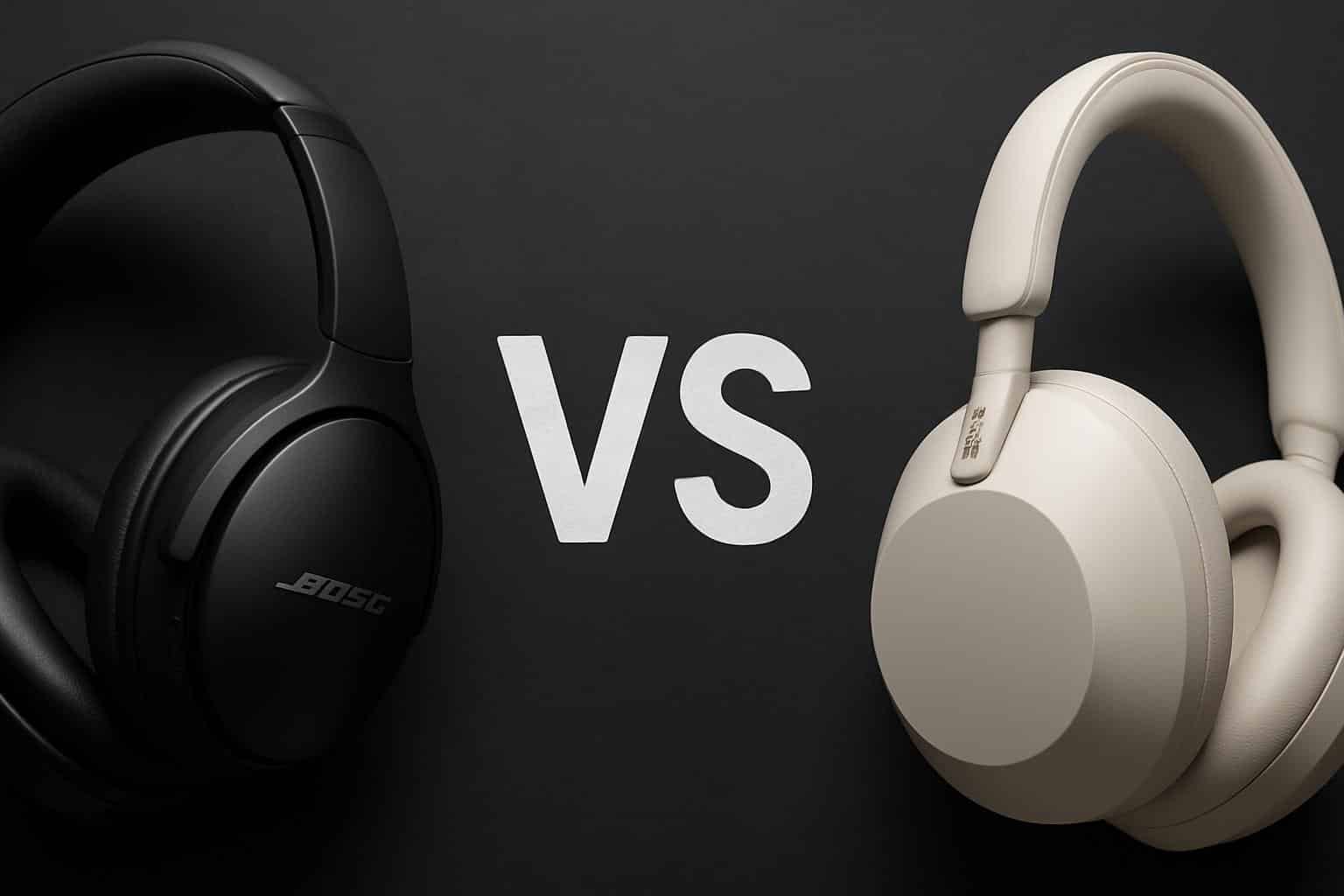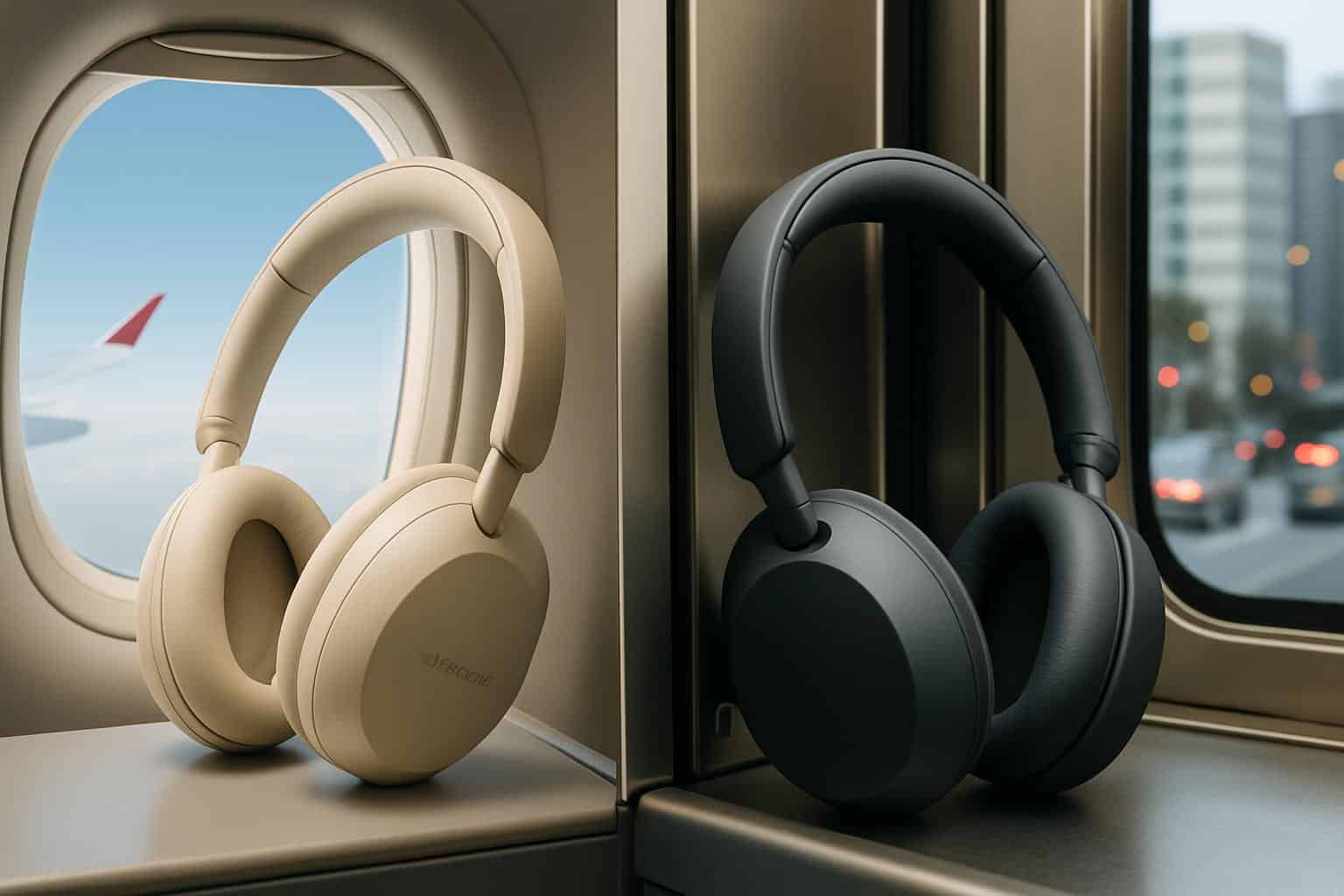I tested both flagships on airplanes for a week. I wore them through days of work in the office and on city commutes to determine which pair really reigns supreme. Both the Bose QuietComfort Ultra 2 and the Sony WH-1000XM6 come in at the same pricey cost, offer reference-level noise cancellation, and shine a light on spatial audio, though they take different paths to get there. The quick answer: For most listeners, Sony’s headphones are the best; those who travel a lot and love wired headphones should consider Bose.
Design and comfort differences for daily wear and travel
Both feel unequivocally premium, but they carry weight differently. The Bose pads are softer and the clamp lighter, which prevents hot spots on long hauls. After four hours on a flight leg and another two at a desk, the Bose still felt fresher at the crown of my head.
- Design and comfort differences for daily wear and travel
- Noise cancellation face-off in planes, trains, and cities
- Sound quality and spatial audio compared across features
- Codecs, connectivity, and wired options for both models
- Apps, controls, and smart features that matter most
- Battery life, charging time, and real travel readiness
- Call quality and microphone performance in real use
- Price, overall value, and which headset truly wins

Sony compensates with a cleaner hinge design and a bit stiffer padding, which keep the earcups more stable while on the go. Fit is personal, but if you spend whole workdays in headphones regularly, Bose has a slight comfort advantage.
Noise cancellation face-off in planes, trains, and cities
On an A350 cabin and a New York subway platform, it impressively killed low-frequency rumble on both. In side-by-side switching during taxi and takeoff, Sony cut a hair more of the bassy drone and HVAC hiss. It’s the kind of distinction you hear when you’re listening for it, not a night-and-day chasm.
Independent labs such as RTINGS and SoundGuys have long demonstrated Sony trumping alternate flagship sonics when it comes to sub-200 Hz shushing, and the trend does not break with these headphones either. The midband fills in a little on Bose, which is good for chatter-cutting in cafes and open office settings. If you demand the very best ANC, then Sony is the safer bet; if “excellent” will suffice, both have your back.
Sound quality and spatial audio compared across features
Straight out of the box, Bose takes a warm and consumer-friendly approach with plenty of bass and a smooth lift in treble, which keeps vocals sounding clear. Sony is more toward the neutral half and doesn’t collapse the stage as much with EQ. Fine-tune sub-bass, presence, and air with multi-band EQ in the Sony app; quick settings over three bands from Bose are less precise.
Meanwhile, Bose Immersive Audio for spatial listening introduces believable height and stable imaging that’s particularly effective with live recordings. Sony’s 360 Reality Audio and cinema profiles build an even wider bubble when the content is encoded, while video head-tracking on the XM6 feels more organic. Neither is a replacement for proper multichannel, but both add life to podcasts and acoustic set lists.
Codecs, connectivity, and wired options for both models
Here’s where philosophy diverges. Sony supports SBC, AAC, LDAC, and LC3 for potential LE Audio usage going forward that would provide Android users with an agreed-upon wireless high-resolution route using LDAC and more ecosystem-wide compatibility. Bose provides SBC, AAC, and aptX Adaptive that can sound great but is supported on fewer phones than LDAC.
Bose scores a significant victory in favor of USB-C digital audio. Plug directly into a laptop or phone for bit-perfect wired listening—no dongle required—and still have the analog input for airplanes. Sony keeps it business as usual with the old 3.5 mm analog jack. If you travel with a contemporary phone and loathe adapters, Bose’s use of USB-C is a quietly transformative feature.

Apps, controls, and smart features that matter most
They both have multipoint pairing, wear detection, and configurable controls. The most fully featured of the lot is Sony’s app—detailed EQ, adaptive sound control that can learn your locations, and Speak-to-Chat that pauses audio when you talk. It’s a steeper learning curve, but there’s big payoff for power users.
Bose’s app is more stripped down and easier to operate, something many will prefer even though the EQ isn’t as granular. The Bose Aware Mode adds a natural sense of space, and the noise floor remains impressively low when you want quiet without isolation.
Battery life, charging time, and real travel readiness
On a full charge (which takes about two and a half hours), both manufacturers claim 30 hours with ANC activated, the equivalent of your average cross-country flight plus an entire day at work. Both have strong quick-charge performance, and both cases can stow neatly inside a backpack without taking up a lot of space. The real-world drain is more varied based on codec and volume than brand here; LDAC and spatial modes cost you a couple of hours on either set.
Call quality and microphone performance in real use
In quiet rooms, they both sounded video call-ready. Outdoors, beamforming and noise-filtering technology from Sony helps keep your voice steady in wind or traffic. Bose does a slightly better job at quieting background noise but permits a little more ambience to sneak in when winds start gusting. When it comes to communicating, Sony is the better communicator for those on the go.
Price, overall value, and which headset truly wins
When list prices are aligned at the highest level, distinctions matter.
Sony’s claims include more effective ANC, a supporting cast of codecs (including LDAC and LC3), a deeper app, and a marginally better calling experience. Bose shoots back with earcup cushions that are more of a joy to wear over long periods, killer out-of-box tuning, an immersive mode that infatuates me with live content, and a weirdly useful USB-C wired audio option.
For most people, the pick is the Sony WH-1000XM6. It negates and adjusts more as your library and devices change. If you want comfort and direct USB-C listening to be your top priority, or if you simply don’t want to spend a lot of time tweaking an EQ for the sound, consider the Bose QuietComfort Ultra 2. Either way, you’re investing in the two best travel headphones currently on the market.

